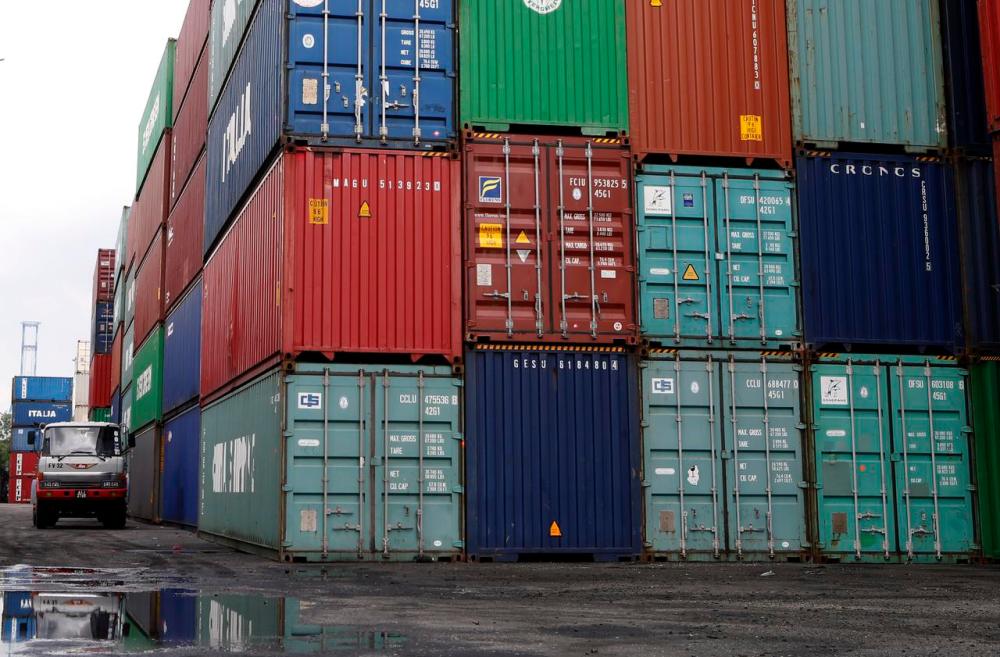PETALING JAYA: Malaysia’s May exports declined 25.5% to RM62.7 billion year on year, on the continued effects of the Covid-19 pandemic, but trade activity is expected to gradually recover in the coming months as restrictions are lifted in low-risk countries and demand and supply conditions resume.
In a note, UOB Research said it is maintaining its estimate for exports to decline 10% in 2020.
“Market optimism over reopening of economies has wavered following renewed spikes in infection rates particularly in the United States. In Malaysia where the infection curve has remained flat, talks continue about reopening of borders to few countries in the region including Singapore, Brunei, Australia, and New Zealand.
“Improving economic activity in China and Malaysia’s sustained growth of exports to China is encouraging,” it said.
MIDF Research echoed the sentiment, saying the trade performance was in line with that of neighbouring countries such as Indonesia and Thailand, which also experienced a contraction above 20% year on year in their exports.
“The impact of Covid-19 has emerged as the top risk to global trade flows as it affects both supply and demand of goods.
“This includes Malaysia, particularly with almost two months of the movement control order (MCO) which has disrupted production and eventually exports,” it said.
In addition, it said the rising protectionism measures, particularly the re-escalation of US-China tensions, pose a bigger threat to foreign trade.
According to the Department of Statistics, in May 2020, Malaysia’s exports recorded a decrease at a slower pace than imports, resulting a trade surplus of RM10.4 billion, higher by 14.7% compared with May 2019. Meanwhile, Malaysia’s total trade stood at RM115 billion, decreased 27.8% compared with a year ago.
Chief Statistician Datuk Sri Mohd Uzir Mahidin pointed out that re-exports were valued at RM8.8 billion, a decrease of 30% year on year and accounted for 14% of total exports. Domestic exports recorded a decrease of 24.7% to RM53.9 billion.
The decline in exports was due to lower shipments to India (-RM3.2 billion), Singapore (-RM2.5 billion), Thailand (-RM2.1 billion), Japan (-RM2 billion) and the European Union (-RM1.9 billion).
Lower imports were mainly from China (-RM3.3 billion), Singapore (-RM3.1 billion), the European Union (-RM2.3 billion), Thailand (-RM2.1 billion) and Indonesia (-RM1.4 billion).
The main categories which contributed to the decline in exports were electrical and electronic products (-RM5.8 billion), petroleum products (-RM2.9 billion), crude petroleum (-RM1.7 billion), manufacture of metal (-RM1.4 billion), chemical and chemical products (-RM1.2 billion), and machinery, equipment and parts (-RM1.1 billion). Decreases in imports were noted for petroleum products (-RM5.1 billion), chemical and chemical products (-RM2.6 billion), transport equipment (-RM2.4 billion), machinery, equipment and parts (-RM1.9 billion) and crude petroleum
(-RM1.8 billion).
Meanwhile, imports registered a decline of 30.4% to RM52.3 billion year on year which was the largest drop since January 2009 during the global financial crisis in 2009.
The fall in imports by end-use was attributed to intermediate goods, capital goods and consumption goods. Imports of intermediate goods were lower by 27.8% to RM30.8 billion. Capital goods stood at RM6.7 billion, down 27.8%, and consumption goods fell 21.9% to RM5.2 billion.










